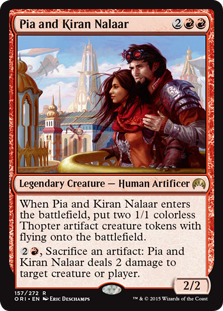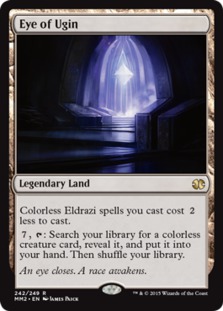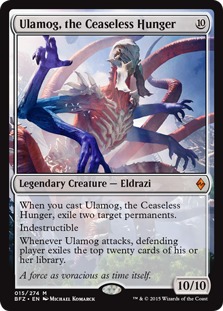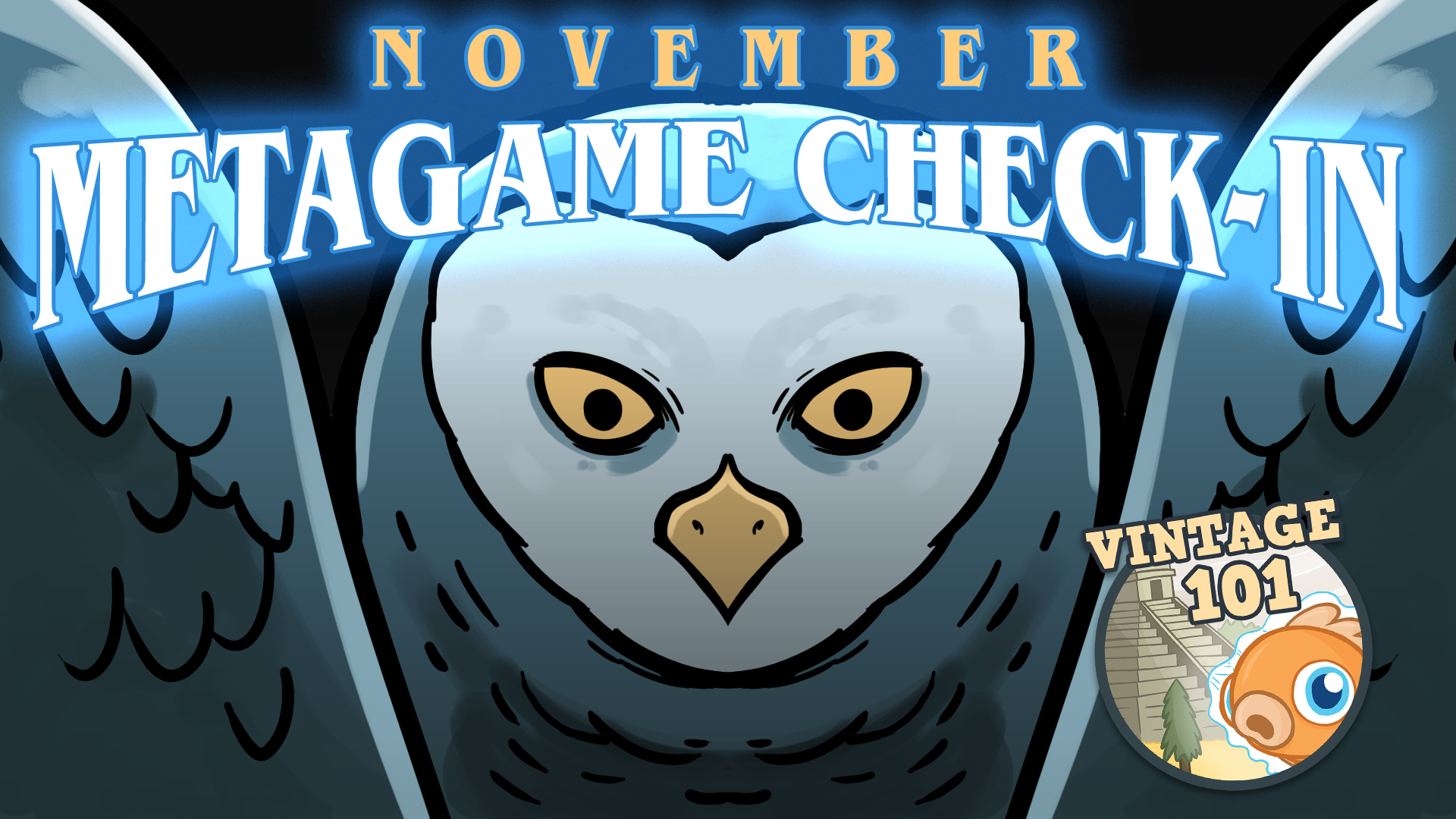This Week in Legacy: GP Louisville Preparation Part 1
Welcome to a little delayed This Week in Legacy, due to the holiday season, and this article being quite the monstrous one. We're going to take a little bit of a break from our typical weekly updates and instead focus on the event coming up: GP Louisville. For this article (and next week's) I'll be running through the top decks to expect at Louisville, what strategies they'll be employing, what new pieces of technology they've found, and what cards you should be utilizing in order to beat the top decks.
So let's get started. There's going to be a lot to cover!
Miracles
The de facto number one deck of the format, although it's been taken down a notch a bit with recent Legacy developments, will certainly have its presence felt, and if any of the recent tournaments are an indication, it'll also likely be found within the Top 8. With Monastery Mentor's printing the deck got a bit of a shake-up, but has now begun to settle into almost a spectrum of the archetype, ranging from pure-control to an almost tempo-style shell indicative of how much Mentor is being leaned on. Nonetheless, the core of the deck will remain the same: Sensei's Divining Top, Counterbalance, Terminus, and Swords to Plowshares.



What's New?
Although there have always been deviations on Miracles, the current metagame has shown us what I would think as four distinct versions of the deck that you should be on the look-out for.
Let's start by looking at a more controlling, and hence traditional, list of Miracles, from Atsuki Kihara, second-placer of GP Chiba:

These lists opt to rely on simply locking out the opponent in the first game, be it via bevies of removal or the CounterTop lock, and then instantly killing via Entreat the Angels for a large and typically lethal amount or just ultimating Jace, the Mind Sculptor. Note that the creatures in this list are all meant to blank removal – Clique and Snapcaster have already done their damage once they're in play due to their ETB triggers, and some list go even further by only using Snapcaster. Of course, post-sideboard things get a bit more tricky with almost all of these lists having Mentors available to capitalize on the opponent's lack of removal. Nonetheless, with these lists expect to play a long game.



Joe Lossett is well-known for his more creature-heavy “Legends” Miracles list, that aims to abuse Karakas and Vendilion Clique / Venser, Shaper Savant in order to soft-lock the opponent in the end-game, along with the aforementioned Jace and Entreat. Again, Karakas also helps nullify opposing removal game one. Cavern of Souls, set to Wizard, is also a common addition to these kind of lists in order to trump the mirror match or beat up on Delver even further, and Spell Snare is common in these lists over the typical Counterspell due to Joe's popularization.




Probably the most common Miracles list will be one touting some number of Mentor in the main deck, such as Yuuya's Chiba Top 8 list:

These list generally finds room for some number of Predict to increase card velocity and fuel Mentor, and also maximize numbers on Brainstorm and Ponder. Entreat the Angels, although found in Yuuya's list, is often cut from these lists too since Mentor provides a lot of power as a win condition anyway.


Lastly, the most aggressive version of Miracles is the quad-Mentor lists, as featured by Scott Waldron at Eternal Extravaganza 5 and The Brainstorm Show.

Jace, the Mind Sculptor's omission is probably the most notable thing within these lists, opting for leaner and more synergistic card velocity engines like the aforementioned Predict, and sometimes includes a singleton Preordain to up the cantrip count. Engineered Explosives is a common addition as a cheap way to trigger Mentor and sweep the board while leaving the Monk army alive – for these reasons a Terminus is sometimes trimmed from the list. These lists have a much more tempo-esque “protect the queen” gameplan and can turn the corner much faster than other versions, as land drops are not required in order to fuel a large Entreat. Three mana for Mentor is more than enough to do a lot of damage, especially with two Tops. Interestingly, these lists, although susceptible to removal, are often able to grind through removal due to the increased Mentor count. Some list also take this list ideology to the extreme and even feature Daze in the typical Counterspell slot, as Claudio Bonnani's original Mentor Miracles list did and Kai Sawatari in GP Chiba – though this is certainly too uncommon to worry about playing around.
With all these lists, of course, be aware of the power of red cards post-board. Mana denial haymakers like Blood Moon, From the Ashes, and Back to Basics can take many by surprise. Izzet Staticaster and Sulfur Elemental can decimate certain boards, Wear // Tear is perhaps one of its best post-board options and blue players must always fear the speed and efficiency of Pyroblast in a counter war.
Do note that there are also some wild and less mainstream versions – be it pure Blue-White versions touting main deck Back to Basics or ones running Rest in Peace to combo with Helm of Obedience and Energy Field, though the latter is certainly less common these days.
How Do I Beat It?
Firstly, being able to pressure Miracles reasonably, while not over-extending into Terminus has always been a winning strategy since the days of Goblins poking CounterTop opponents to death while drawing cards with Goblin Ringleader. For example, Delver players should either opt to get on board as fast as possible and ensure they can win a fight against the sweepers, or deploy threats one at a time. Threats like True-Name Nemesis, Nimble Mongoose, and Young Pyromancer have also been effective too, as they nullify Swords to Plowshares effectively only leaving Terminus as a key spell to counter. Grindy cards like Painful Truths and Sylvan Library are also very effective at ensuring that Delver can keep up in terms of cards, especially since the lifeloss is irrelevant. Capitalizing on Top's mana intensive nature with Winter Orb makes soft counters still effective. Shardless BUG has also always been happy, due to its ability to accrue gigantic amounts of cards with Ancestral Visions, pressure Miracles with Liliana, and have enough creatures (that are often two-for-ones) to present a reasonable clock. That being said, don't expect to have all the time against Miracles. Now the deck can turn the corner very quickly with Mentor.
Catch-all answers are also great against Miracles. Pithing Needle has always been great as a fast way to stop Sensei's Divining Top, but can also hit Jace in a pinch. Cards like Abrupt Decay (essentially printed to fight Miracles itself) and Council's Judgment can answer a threatening Mentor or a Counterbalance lock. Keeping flexible is key.


Being uncounterable is also important. Cavern of Souls singlehandedly breaks a Counterbalance lock, and is valuable for Elves, Death & Taxes, and Eldrazi. Aether Vial performs a similar role while also allowing for a quick rebuild after Terminus has cleared the board. However, just having a diversity of casting costs helps against the deck's lock pieces, and switching this up post-board is a great plan. As aforementioned, planeswalkers are great due to their casting costs, which are hard to counter and also can pressure Miracles while not overextending.


Nonetheless, Miracles is the top deck of the format and is incredibly consistent due to all its card selection engines, ability to answer almost any situation, and incredibly diverse range of options on how to attack you. Be ready for the deck and identify which of its variety of potential gameplans is being utilized.
Death & Taxes
Death & Taxes has also cemented itself among the top tiers of the metagame. The white, disruptive creatures combined with mana denial and Aether Vial has never been in such an exceptional place.



Let's have a look at my list to give a bit of perspective to start with:

What's New?
Recruiter of the Guard and Sanctum Prelate have changed how the deck performs. Recruiter, in conjunction with Flickerwisp, provides a late-game card advantage machine that can grind out even the toughest of opponents, creating an Elemental army of 3/1 fliers out of nowhere, especially in conjunction with Aether Vial. It also allows for a huge amount of customization and surprises for opponent's. Recruiter for a Faerie Macabre can blow out a Reanimator player, or Recruiter for Leonin Relic-Warder can stop dangerous equipment and all of these cards can be quite off-the-radar, especially if any splashes are involved, so be prepared. Sanctum Prelate also needs little introduction. Although slow, she can shut down fair and unfair decks alike. Prelate stops Storm cold and can also stop a Delver or Miracles player from cantripping and utilizing removal. Lands is almost completely locked by a Prelate on two. The card is incredibly powerful, though Death & Taxes players should be aware of locking out their own removal and Prelate being lackluster in some matches. I'd also like to give a warm mention to Palace Jailer as a surprise addition for grindy matchups that can feel like a tutorable Dark Confidant with upside. Even if removed, the cards keep rolling as long as Monarch is preserved, and he synergizes very effectively with Flickerwisp.



Thalia, Heretic Cathar is also a card to stay wary of, but in general has been seeing less and less play and shouldn't be considered a core piece of the deck. She's certainly powerful against certain decks, but is definitely not as impressive as Recruiter or Prelate.

Less prominent now due to Recruiter of the Guard are red-splash versions of Death & Taxes. Red for Magus of the Moon and Pia and Kiran Nalaar were once excellent options to give the deck huge haymakers and grind engines, though Recruiter and Prelate have largely supplanted these.


How Do I Beat It?
Having a diversity of removal options is key, now with Prelate potentially locking out certain casting costs. Having a few Disfigures to complement Abrupt Decay can work wonders, as can adding a Barbarian Ring and Molten Vortex to your Lands list. Sweepers are also excellent. These can range from the ultra-narrow Sulfur Elemental and Dread of Night, to more versatile sweeper options such as Golgari Charm or Kozilek's Return, Return being particularly significant due to beating Mother of Runes. Cards like Grim Lavamancer and Izzet Staticaster can also be very potent. These are particularly great in matchups where you expect your opponent to cut removal post-board, but are prone to things such as Phyrexian Revoker.



Death & Taxes is an artifact-based deck, leaning hard on Aether Vial to run efficiently and Stoneforge Mystic to clean up the game. Cards like Null Rod are excellent as a blanket answer to all of these, though more general answers like Smash to Smithereens or Pithing Needle are also great.

Also, prepare your mana base. Fragile mana bases are prone to getting Waste-Ported to death and Deathrite Shaman is never a guarantee with Plow and Revoker in the mix, though going to the extreme of Tsabo's Web is probably not recommended. Furthermore, aim to keep your non-creature spells as lean and efficient as possible as casting them in a timely fashion before the locks come into place is key. Curving out with Lightning Bolt for significant threats and clocking quickly usually does a great amount of work.
In the end, above all, respect the new powers of the deck. Respect its newfound ability to grind and respect its newfound ability to shut the door completely on certain archetypes. If you haven't played against the deck with the Conspiracy 2 cards until now, do so. Many matchups have now been turned on their head, and it is up to players to adapt to this.
Delver
Delver decks are the mainstay of the format and come in a variety of forms. They begun with the most traditional RUG Delver, which aims to utilize mana denial, soft counters, and a fast clock in order to beat opponents, and all of the decks utilize this gameplan. BUG Delver incorporated Deathrite Shaman as an excellent tool to leverage mana denial and Daze further and is a deck to look out for. Recently, however, other Delver decks have supplanted these two.


What's New?
I'll be concentrating on three Delver decks primarily, particularly since they are the more recent and more popular variants in the format.
The first of these is Grixis Delver, the most played of all Delver variants.

The deck has a variety of gameplans that incorporate traditional Delver gameplay with a reasonable midrange-style backup plan. Delver of Secrets can lead to the typical busted starts utilizing Daze and Wasteland to stop the opponent from doing anything, while Delver hits them a bunch of times and a flurry of Lightning Bolts finish them off. However, Deathrite Shaman and Young Pyromancer allow the deck to have a reasonable lategame, as Pyromancer and a bunch of cantrips can lead to a very threatening army. Cabal Therapy can tear apart opponent's hands thanks to Gitaxian Probe. Gurmag Angler is also incredibly threatening as a late-game threat that can eat up Tarmogoyfs and Eldrazi alike.



In a similar vein, 4c Delver has also come to prominence thanks to excellent players like Ben Friedman and Jarvis Yu championing the deck.

Ben has an excellent article on the deck at GatheringMagic.com, so I'd recommend giving that a read. The 4c lists sacrifice a stable mana base for an incredibly diverse range of removal options, incorporating Lightning Bolt to complement aggressive draws but also including Abrupt Decay for unparalleled flexibility against creatures and problematic cards like Counterbalance. It's core of threats has also been Snapcaster Mage and True-Name Nemesis, incredibly midrangey cards that emphasize getting to three mana and playing a longer game, and the deck can at times feel more like a midrange deck than a Delver deck. This list leans even harder on Deathrite Shaman than Grixis Delver, and Leovold, Emissary of Trest has started making an appearance here too as another effective midrangey three-mana creature that does a lot of work. Do note that Delverless versions of this deck have also been around, swapping Delver for cards like Baleful Strix.



The other new variant that has been obtaining a huge amount of traction is UR Delver:

UR Delver plays less like a traditional Delver variant – not even including Wasteland – but aims instead to kill the opponent very quickly with incredibly efficient Prowess creatures, cantrips, and burn spells. In a way, it is a Burn deck with a few counterspells thrown into the mix to assist it against combo. The deck existed for quite awhile in Legacy, but Stormchaser Mage pushed the deck into the realm of excellence as a threat that complemented its gameplan better than the sometimes slow Young Pyromancer. Bedlam Reveler also gave the deck a significant way to grind against fair opponents, essentially acting as a Treasure Cruise with a giant body attached. Price of Progress is also one of the key cards in the deck, allowing it to deal a killing blow against the greedy mana bases of Legacy, though it can be a bit high-variance. Speaking of mana bases, UR Delver has one of the more stable mana bases in Legacy, being able to play around Wasteland effectively with a bunch of basic lands.



More on UR Delver can be found on Jonathan Alexander's The Weekly Wars, where he as an excellent outline of his recent forays with the deck. Find those articles here and here.
How Do I Beat It?
Delver decks have always been somewhat prone to a few things. Firstly, the threats in the deck can be quite flimsy. Delver of Secrets, once dealt with, can leave the deck floundering to find another, and this can be quite challenging when there are so few. As such, removal options that can deal with threats quickly, such as Bolt or Plow are at a premium. Abrupt Decay is also most powerful against almost all the threats in the deck, so this is also a good option to beat Delver. However, preparing ones deck for Gurmag Angler is important, and cards like Dismember are at quite a premium currently. True-Name is also getting more popular in Delver and can be worrisome for the unprepared, and flexible removal like Council's Judgment and Engineered Explosives may be necessary.



Molesting Delver's particularly fragile mana base is also very effective. Wasteland and Blood Moon can lead to some very hard times. Lock pieces can also be very powerful. Thalia, Guardian of Thraben cripples Delver deck significantly, especially if they are trying to cantrip for a threat, as these cantrips are efficient no more. Counterbalance lock is also something to prioritize against some Delver variants, though ones touting Abrupt Decay make this a bit more suspect and perhaps something to trim.



Combo decks should also have a very certain gameplan against Delver, especially with their disruption options. Slowing down their clock, giving yourself room to breathe, or going fast before they can establish it may be excellent ways to go.
Delver decks have a plethora of ways to fight, and identifying which variant is key. You need to understand what place within the spectrum the Delver deck lies – am I the control deck, aiming to stop the Delver opponent from killing me in the skies backed-up by Lightning Bolts? Or do I need to be aware of a lategame True-Name or Pyromancer ruining my day, and do I need to start turning the corner myself and putting them on the defense, making them play a control role they may be ill-suited for?
Eldrazi Stompy
Ever since Oath of the Gatewatch, Eldrazi has been on everyone's radar and has now settled as the most powerful Stompy deck in Legacy's history, due to the typical powerful prison pieces, but also the deck's absurdly fast clock that also has disruptive elements.
The core of Eldrazi has always been its core of Sol Lands – Ancient Tomb and City of Traitors complemented by Eldrazi Temple and Eye of Ugin. These power out a bunch of dorky Eldrazi – be it Matter Reshaper or Endless One, but the true powerhouses of the deck are Thought-Knot Seer and Reality Smasher. Seer offers unparalleled disruption on a beefy body, while Smasher takes huge chunks out of life totals while also being hard to kill in both combat and with removal.



What's New?
The “stock” list I look towards is that of noloam, who continually 5-0's on Magic Online and is quite active on The Source.

Oblivion Sower is the newest addition to be aware of. With Urborg, this can lead to a huge burst of mana that can be pumped into Eye of Ugin, while also being a very excellent beatstick. It's also castable under Blood Moon and other awkward situations. It's largely replaced Endbringer as the top-end of choice, though some lists do still love him, particularly as a card that is great against Show and Tell.


Also notable is a few other non-core cards. Umezawa's Jitte has been an excellent addition to the deck flush with creatures to dominate opposing creature-based matchups. All Is Dust in the sideboard is excellent against problematic permanents post-board such as Moat and Humility, as well as just being an excellent sweeper. Lastly, Ulamog, the Ceaseless Hunger is a monster to dominate long, drawn-out matches, especially since Oblivion Sower can help accelerate him out.



Other than the stock colorless version, splash versions have been utilized. Eldrazi Displacer is perhaps the best reason to splash due to its power against fair creature decks and against decks like Reanimator or Sneak & Show. More comprehensive splashes have been done, utilizing Corrupted Crossroads and Aether Hub or just painlands for the desired two colors:

Although Eldrazi Skyspawner, Displacer, and Drowner are things to lookout for, lands are more key to identifying which variant of Eldrazi you're up against.
How Do I Beat It?
Eldrazi has an incredibly vulnerable mana base, being filled with only non-basics. A timely Wasteland can do a lot to hamper progress of the deck, and even more devastating are cards like Blood Moon, Back to Basics, and Price of Progress post-board. The deck also relies on attacking with creatures to win, and they are stuck to the ground, so something like Moat or Ensnaring Bridge can work wonders. Do note that a timely Thought-Knot Seer can strip these game-winning cards away.


Removal also needs to be tailored to beat the huge Eldrazi and the Chalice that locks out certain spells. Dismember is an excellent card played by Eldrazi itself to get around Chalice. Non-targeted removal is also strong, such as Council's Judgment or Diabolic Edict, as these can stop a Smasher. Baleful Strix functions similarly, trading with the huge monsters while also leaving its caster up on cards.


Speaking of Chalice, for combo decks this is the most pivotal piece of the puzzle. Going faster before it comes down, via a quick Empty the Warrens via Chrome Mox, or by dodging it altogether with a card such as Exhume or Show and Tell are solid solutions. Post-board Abrupt Decay or bounce spells can also work wonders. Delver, Miracles, and other blue decks also get cut off a number of pivotal spells, so having post-board answers to Chalice are a good idea as counterspells lose a lot of utility against a deck touting Cavern of Souls. Cards like Ancient Grudge, Abrupt Decay, or Kolaghan's Command are excellent options for destroying Chalice while having further utility.


Conclusion
Whew! That's quite a few decks I've run through. Come back next week for a run down of the rest of the top-tier decks, along with highlights of new decks that have come about that players will need to be familiar with.
In terms of further bits of reading in preparation for Louisville, Reid Duke's Legacy Guide series is absolutely a must-read. Words from a true master. Find each part here. He also has some intriguing videos featuring Leovold recently too!
As always, ‘til next time,
Sean Brown
Email: sean_brown156@hotmail.com
Reddit: ChemicalBurns156
Twitter: @Sean_Brown156
And catch me on The Salt Mine for more Australian banter about Legacy! We have a new episode out and a GP Louisville-centric episode coming too!
The Spice Corner
Ross Merriam already beat me to it, but this showed up in a recent League:

This is Zoo with… Recruiter of the Guard?! And Aether Vial?! And Punishing Grove?! This is a very cool way to get the Nacatls back into relevance, and has much more of a late-game thanks to Recruiter.













